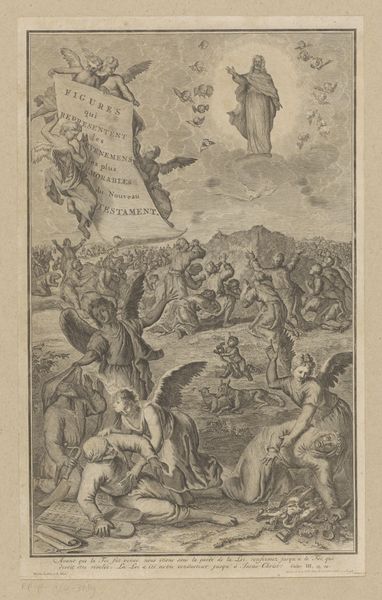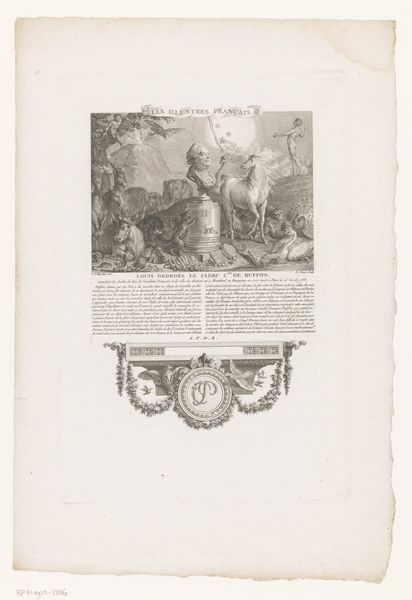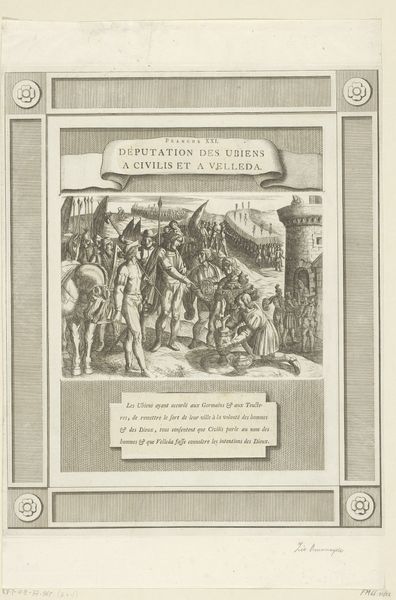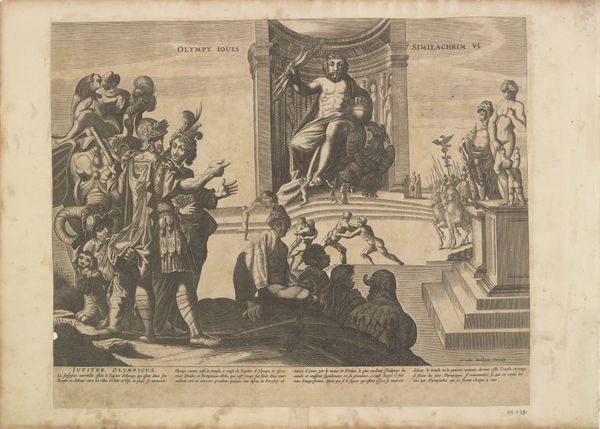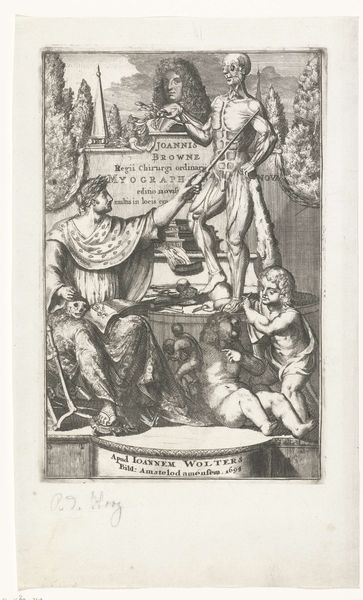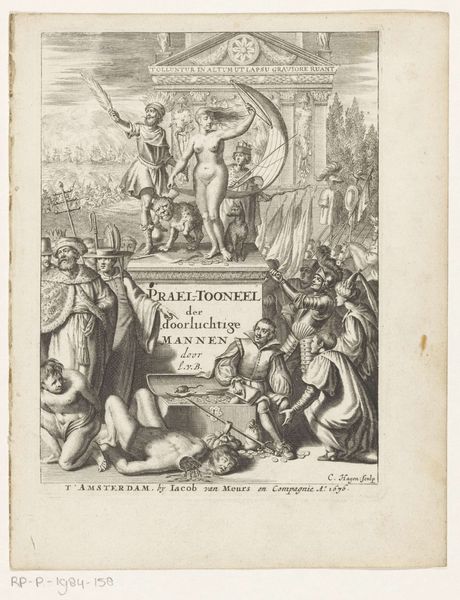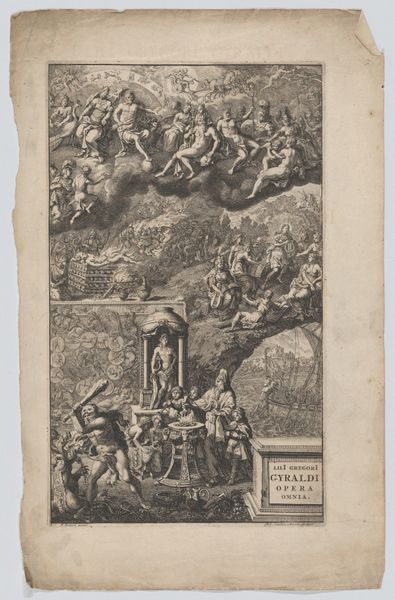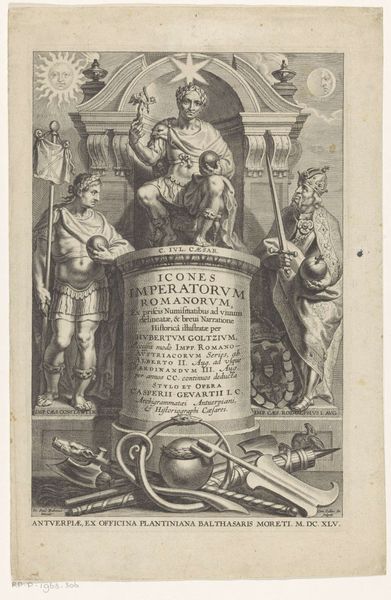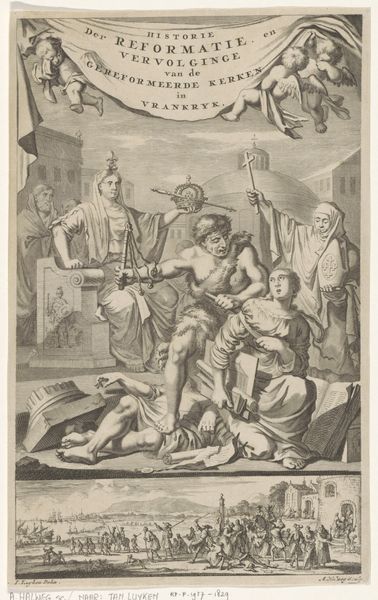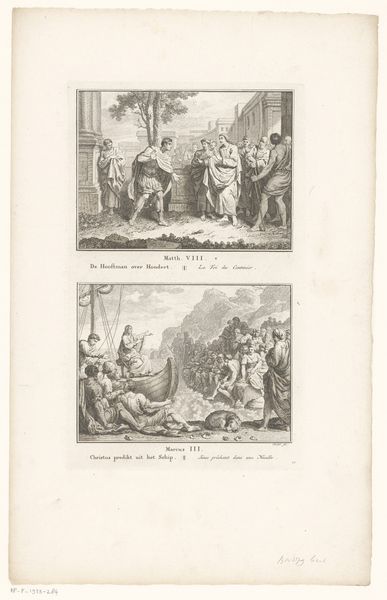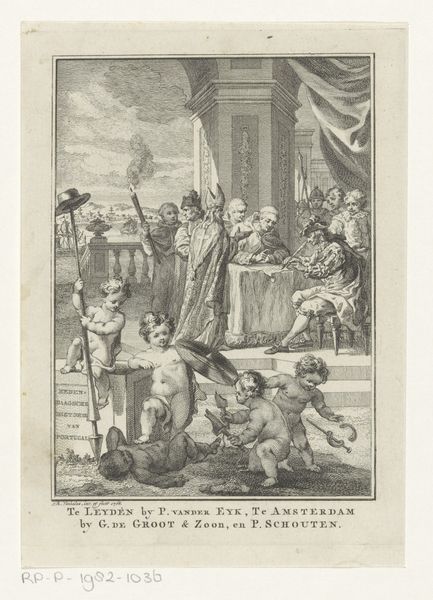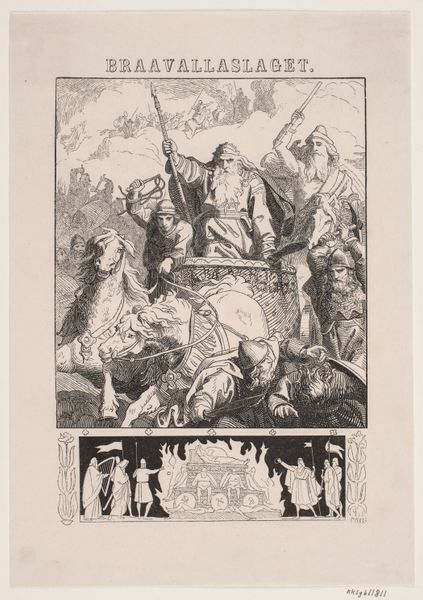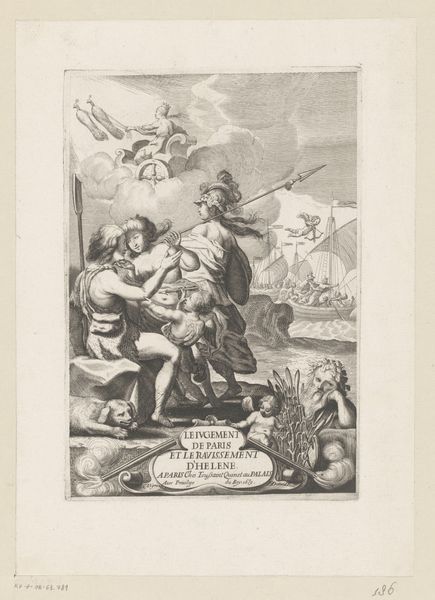
print, engraving
#
allegory
#
baroque
# print
#
classical-realism
#
figuration
#
cityscape
#
history-painting
#
engraving
Dimensions: height 218 mm, width 149 mm
Copyright: Rijks Museum: Open Domain
Curator: Here we have an engraving from 1733, entitled "Allegorie op het Romeinse Rijk," or "Allegory of the Roman Empire," printed anonymously and currently held at the Rijksmuseum. Editor: It strikes me immediately as grandiose and dense. All those figures crammed together! The city looming in the background feels almost claustrophobic. What’s your initial take? Curator: For me, it evokes the Baroque fascination with symbolism, layering meaning within meaning. The central figure, presumably Roma, stands on a pedestal, regal and triumphant, gesturing towards a bustling city. Consider how she embodies the perceived virtues and power of the empire through familiar iconography: her helmet, the scepter, the panoply of associated objects that were charged symbols in the public imagination. Editor: But it also feels incredibly staged. It's this idealized vision of Rome, scrubbed clean of the everyday struggles of its populace. I find myself questioning whose interests are being served by presenting such an overtly flattering image of imperial power? The way she towers over the other figures seems like a bold assertion of dominance. Curator: I agree; that visual hierarchy is critical. It’s not merely a depiction but a constructed narrative about the Empire’s strength. See, below, we also have that figure of the river god, perhaps symbolizing the source and continuity of Roman power, and of course the she-wolf with Romulus and Remus. The visual cues all contribute to this ideal. Editor: Precisely. And understanding this as a constructed image prompts me to ask about what it elides: the violence, the exploitation, the disenfranchisement inherent in any imperial project. Are there any traces that complicate the propagandistic impression of might? Curator: That’s a powerful observation. The small print makes a full interpretation difficult. But one can appreciate how it visually participates in a longstanding tradition of glorifying imperial authority through symbolism. The power of images, and who controls that power, remains so resonant, even centuries later. Editor: It is a reminder of how necessary it is to question narratives, even those presented as celebrations of greatness. The enduring influence of that empire reverberates into our present political discourse.
Comments
No comments
Be the first to comment and join the conversation on the ultimate creative platform.
